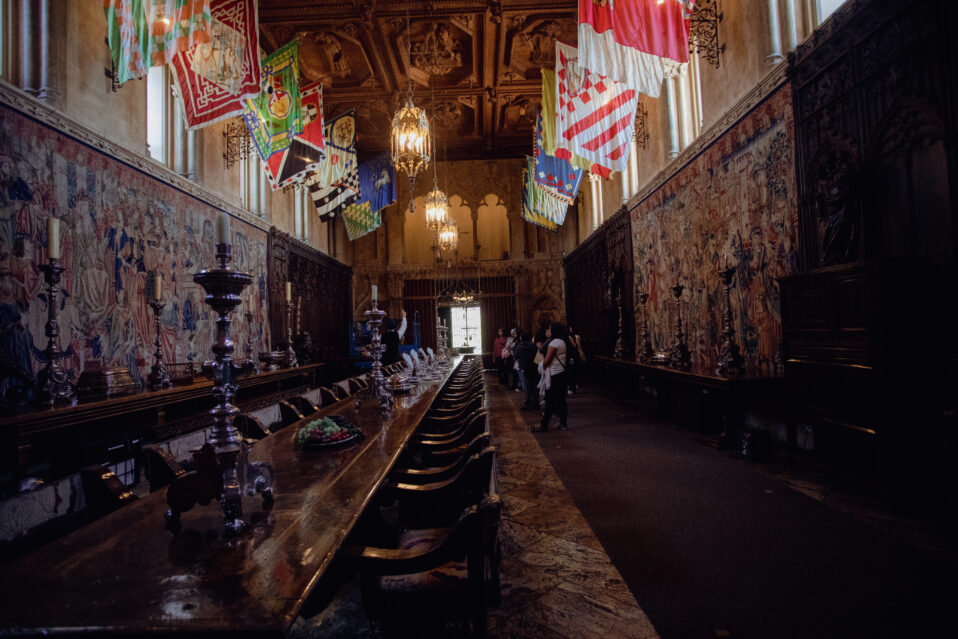Re-joining the board of The Foundation at Hearst Castle brought back many wonderful memories of previous events supported by our fellow philanthropists. One of the most interesting of these unforgettable events was a discussion in 2012 about the treatment of an Etruscan chalice identified in Hearst Castle records as dating from the late 7th century BCE. Apparently made of glossy black Etruscan bucchero (more on that type of ceramic in the glossary below), the chalice had come from the renowned collection of Cecil Baring, 3rd Lord Revelstoke, which was auctioned in London in 1935.
An accredited conservator of antiquities from the J. Paul Getty Museum explained his treatment to us.
The conservator recounted that then-Museum Director Hoyt Fields asked him to look at the chalice, which the staff had examined (along with all objects in the Castle’s collection) after the San Simeon earthquake of 2003. The adhesive on old repairs was beginning to fail, and they risked falling apart. At first, the conservator thought it would be a simple procedure of reattaching the various sections, but the more he looked at them, the more he realized “something wasn’t quite right.” There was indeed something mysterious about the chalice.
The first step in unraveling the mystery was to reverse the old, failed resin. In doing so, the conservator realized the chalice contained an abundance of resin that was used to “give an impression of something that really didn’t exist,” he recounted. He determined that the chalice was a pastiche of elements which came from at least three (possibly four) different vessels. The bowl was one piece (true bucchero), while two caryatids and two panels came from one or two different Etruscan vessels. The foot of the chalice was actually a lid from an ancient Greek vase. Only the bowl was black. The other elements had been re-combined and were covered with several layers of oil paint. The last layer applied to the chalice was possibly shoe polish!
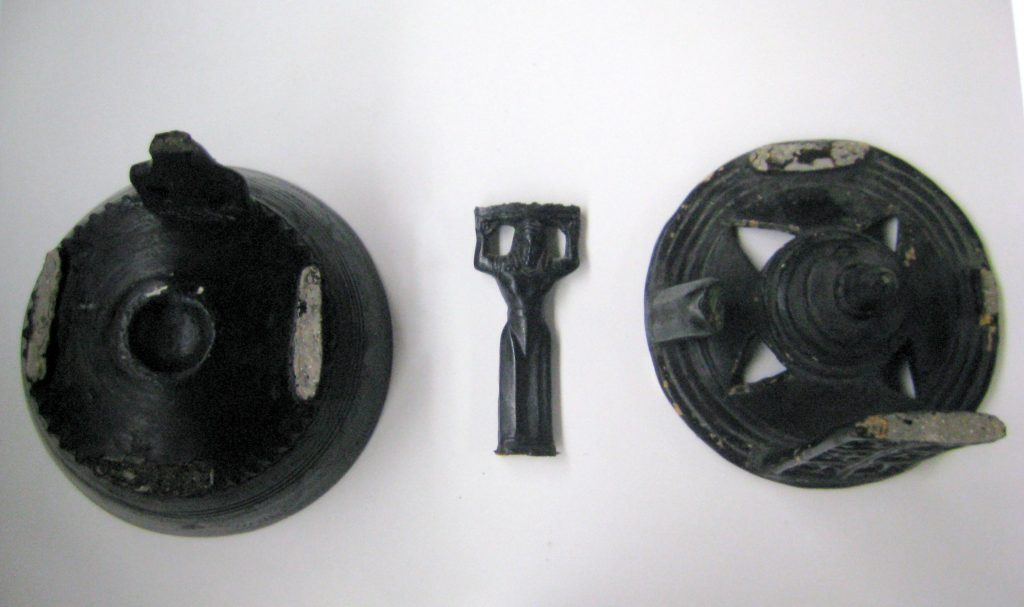
The elements of the chalice as they appeared when the conservator brought them to his studio.
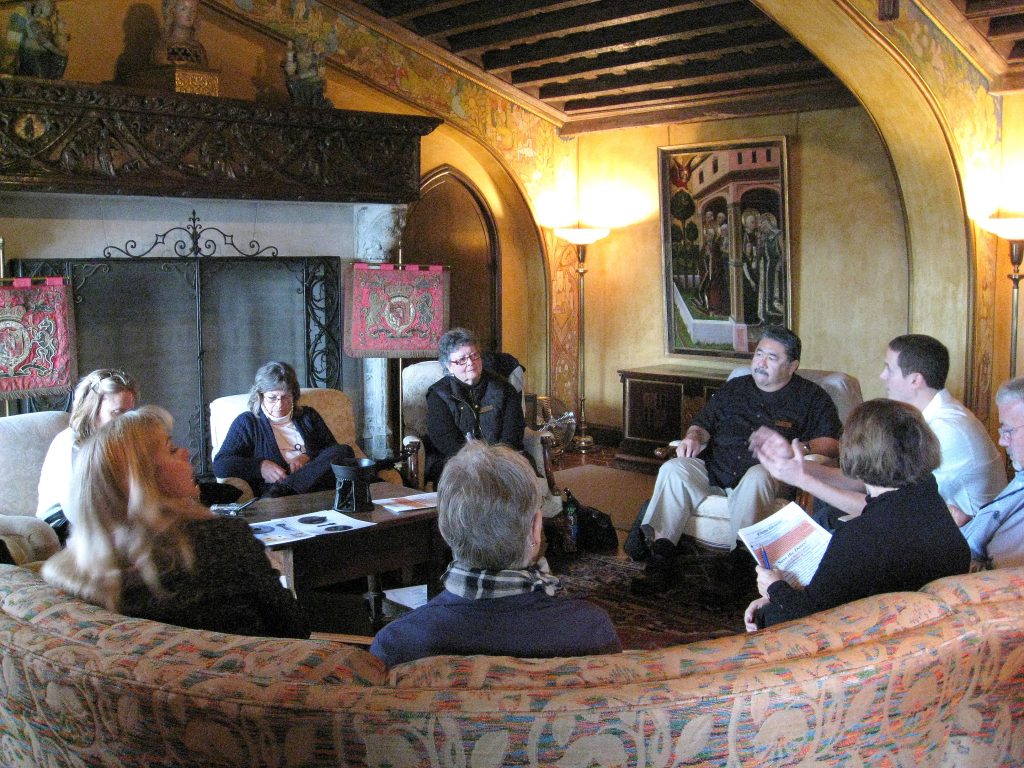
(2012) The Board listens intently as the conservator explains how he unraveled the mystery of a 7th-century BCE Etruscan chalice.
In dissolving the resin and removing the paint, the conservator began to wonder what he had gotten himself into. What should have been a quick and easy job was turning into something more complex and mysterious!
Analysis of the clay used in the various elements revealed they had come from different regions. Another clue was the ridge along the lip of the Greek lid, which was never intended to have anything attached to it. The conservator discovered that small spacers had been used to incorporate the too-short caryatids between the lid and the bowl. Fish glue, common for the day, had been used and was easy to detect because of its odor. He believed that the pieces – two Etruscan, one Greek and two modern-day elements (the spacers) – had been assembled in the early 20th century to create something that appeared to be an ancient object.
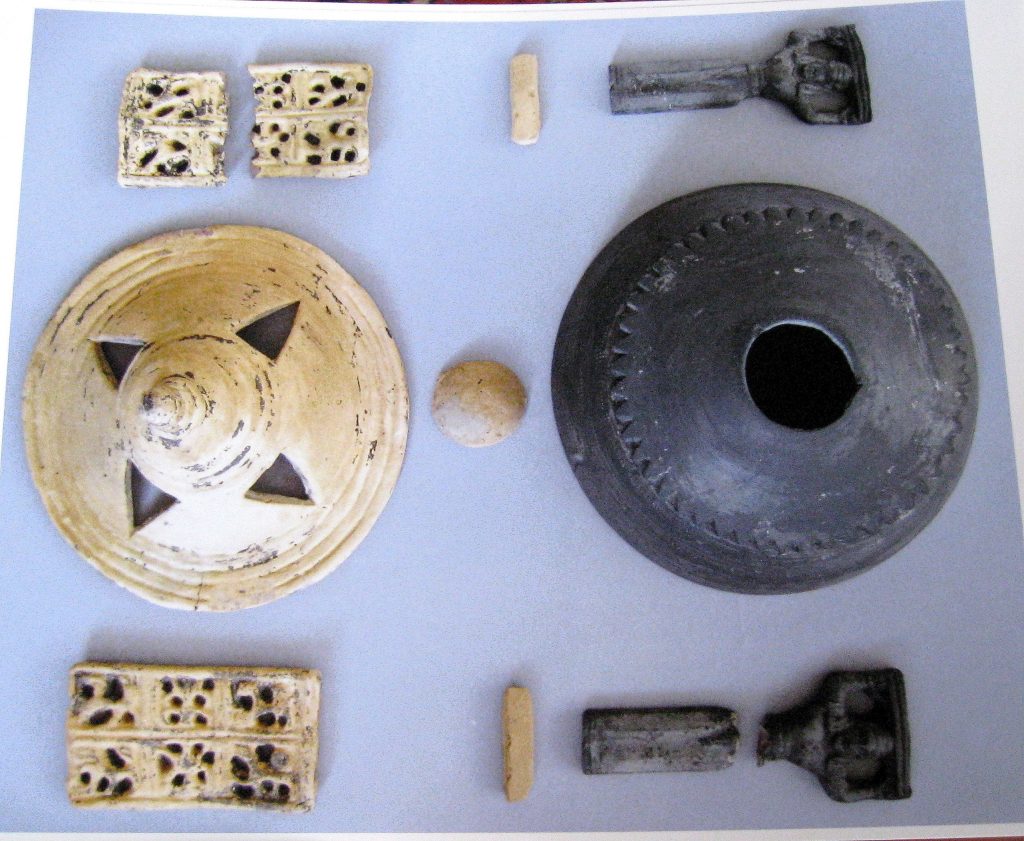
After the chalice was fully disassembled and cleaned, the layers of buff-colored oil paint were revealed.
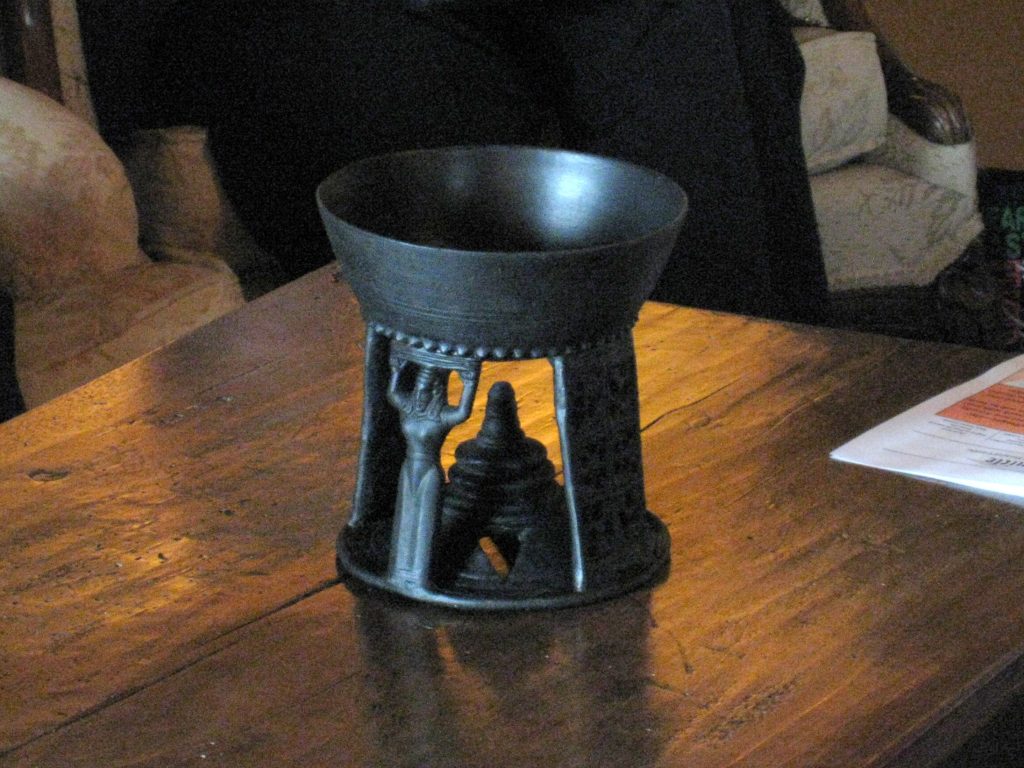
New resins, which can easily be reversed, were applied as adhesives, and finally the object was coated cosmetically so its appearance would be the same as when William Randolph Hearst acquired it.
The chalice is significant in the history of collecting: even sophisticated connoisseurs like Lord Revelstoke and W. R. Hearst could be deceived by a pastiche (and so were other, more recent experts). Moreover, most of the elements were authentic Etruscan bucchero. The Etruscans were the only people known to have made this particular type of earthenware. Unlike Greek pottery, which features color applied to the surface, bucchero is black all the way through the clay to the core. This was achieved through the process called reduction in firing, in which ventilation holes in the kiln are closed during the firing to create an oxygen-starved atmosphere. The fire pulls its oxygen from the clay’s iron oxides, changing the color of the clay from red to black. The uniquely lustrous surface of bucchero pottery was achieved through burnishing and polishing. Sometimes a thin slip (clay emulsion) was applied as a final coat.
New resins, which can easily be reversed, were applied as adhesives, and finally the object was coated cosmetically so its appearance would be the same as when William Randolph Hearst acquired it.
Glossary
Bucchero Sottile |
A delicate, thin-walled clay. Refers to a class of ceramics produced in central Italy by the region’s Etruscan population between the 7th and 5th centuries BCE. Bucchero (Italian pronunciation: [ˈbukkero]) pottery is distinguished by its glossy, black surface achieved through the “reduction” method of firing and the burnishing of the finished product. The light, thin-walled bucchero sottile pottery appears to have been made in the 7th and early 6th centuries BCE. Technique and workmanship declined from about the mid-6th century onward, when bucchero sottile was replaced by bucchero pesante, a heavy, thick-walled ware, complex in form and heavily decorated with reliefs. |
Caryatid |
A sculpted female figure serving as an architectural support, taking the place of a column, pier or pillar. The caryatid appears to hold up a horizontal element (e.g., a lintel, cornice, roof, etc.). |
Etruscan |
The modern English name given to a civilization in ancient Italy in the area corresponding roughly to Tuscany today. This civilization endured from c. 700 BCE until the Etruscans were defeated by the Romans in the 1st century BC. The Etruscans also produced many fascinating bronze sculptures, vessels, and ornaments. |


